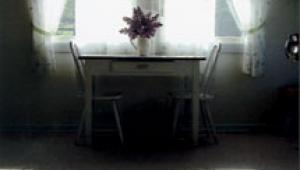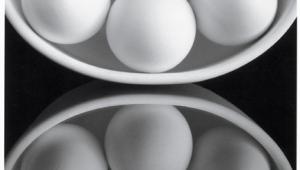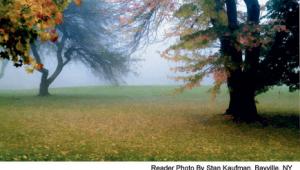Simplify Your Compositions ...it’s simple! Page 2
It's a good idea to try composing the subject somewhere besides dead-center in the frame--sometimes dead-center is most effective, sometimes off-center is better.
 |
|
|
Yet another way to simplify your compositions is to use just a touch of color.
Although lighting and composition are perhaps the most important aspects of
photography, color can play a very important role in some images. Learning to
emphasize color is largely a matter of training your eye to recognize situations
in which color stands out--whether it's selecting one color to predominate
a scene, or by choosing particular colors and minimizing others.
When choosing a color, consider its psychological impact in your image. Perhaps
more than any other design element, color can determine the mood of your photo.
Generally, red, orange, and yellow are considered warm and exciting. Passion,
heat and love are some of the moods that warm colors evoke. Warm colors stand
out in a photo. On the other hand, colors on the other end of the spectrum--such
as green, blue and lavender--are thought to be cool, peaceful and serene.
These colors tend to recede.
Some pictures have impact because of the contrast between a colorful detail
and a muted background; all you need is a splash of a very bright color or two.
You can challenge yourself with a creative self-assignment by looking for scenes
where you can isolate dramatic color against a neutral background. In the case
of the photo on this page, the photographer used her red car as a touch of color
in this monochromatic, wintry road scene in Washington's Olympic National
Park. The eye is drawn to the bright car even though the leading lines that
the road creates would normally lead your eye through the picture.
When working with color, don't be indiscriminate and assume that pretty
color alone will carry the photograph. Wonderful colors are no substitute for
good composition. So don't get so carried away with an interesting scene
before you that you forget to pay attention to composing that great shot. Our
eye tends to weed out distracting elements--the camera lens, on the other
hand, is not as selective on its own.
Often, the key to a successful color photo is how you frame the image. Use a
moderate wide-angle lens (in the 28--35mm range) to reveal the contrast
between the background and the color you want to spotlight. Use a telephoto
lens (perhaps 100mm) to isolate this color, or to minimize the background.
Zoom in on some bright patterns on a piece of clothing, or shoot a yellow umbrella
on a gray, rainy day. Creative options are everywhere--you're limited
only by your imagination.
In a nutshell, you are the director and the cinematographer of your photos.
You decide what the viewer will see. Don't include too much, and thus
take away the magic.
- Log in or register to post comments

















































